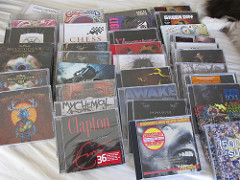Recording Via Time
These days, listening to music on compact discs and audio tapes is no longer a novelty. But have we ever stopped to wonder how the sound gets there? Recording music involves capturing performances for later playback. This is what musical bands and popular singers do. Then, record labels like Virgin Records and Sony transform them into high-quality tapes or CDs for our enjoyment in cars or wherever we go.
The concept of recording music first emerged when a Swiss watchmaker introduced the first musical box in 1796. It was followed by the phonograph invented by Edison in 1877. Edison created a cylinder with soft materials like lead or tinfoil. A stylus would create grooves on these materials, and the recording was established based on the depth of the grooves and the measured air pressure.
In 1896, Valdemar Poulsen demonstrated magnetic recording. In this method, a tape is continuously moved under a recording head. The head transfers digital data corresponding to the sound onto the tape. The playback head then reads these tapes and decodes the data to play them back.
Initially, magnetic recordings were not popular and were inefficient. People preferred phonographs over magnetic records. For example, … ...Read the rest.
“Recording Via Time”


 Manuel is a passionate, driven, and techsavvy AV technician,
Manuel is a passionate, driven, and techsavvy AV technician, 

Recent Comments